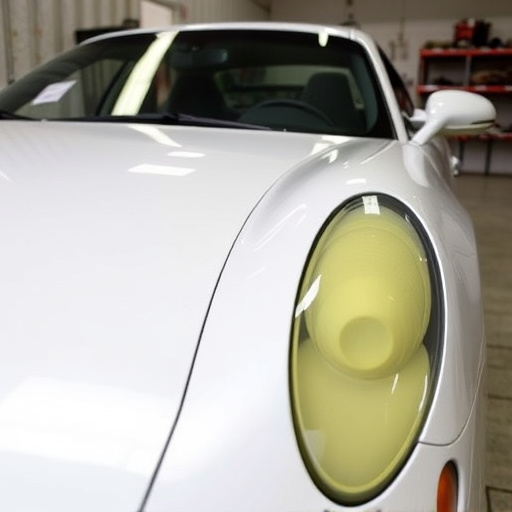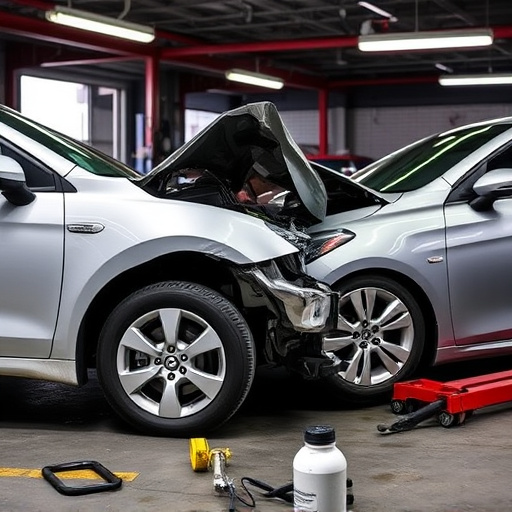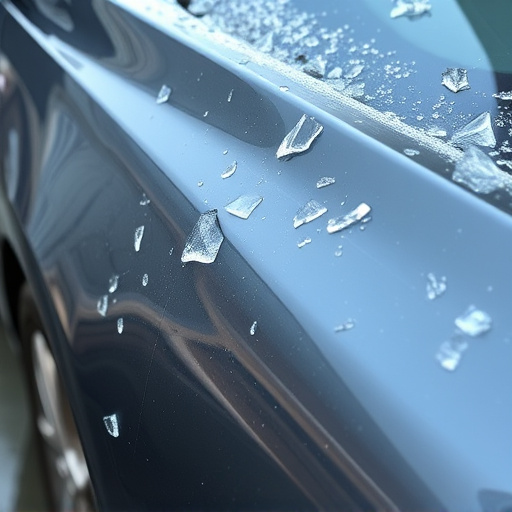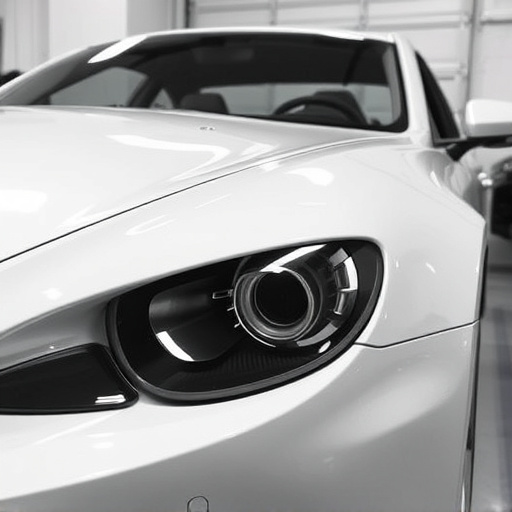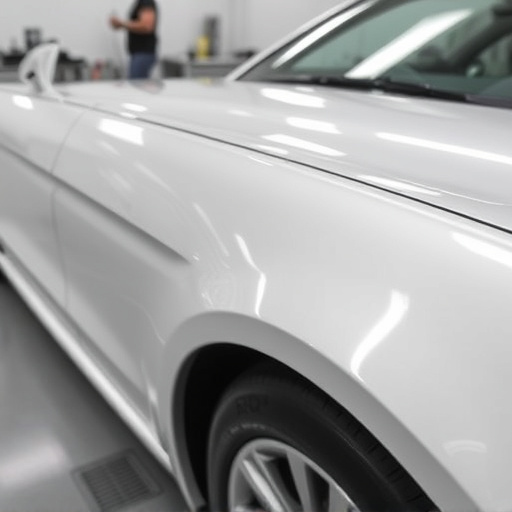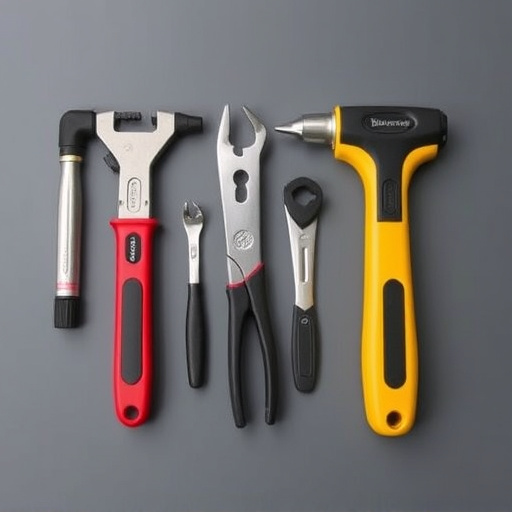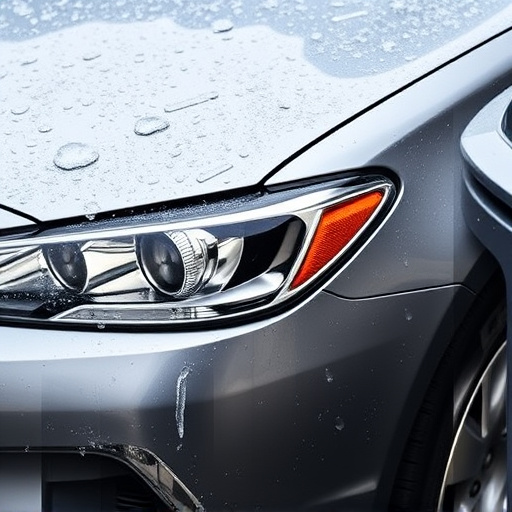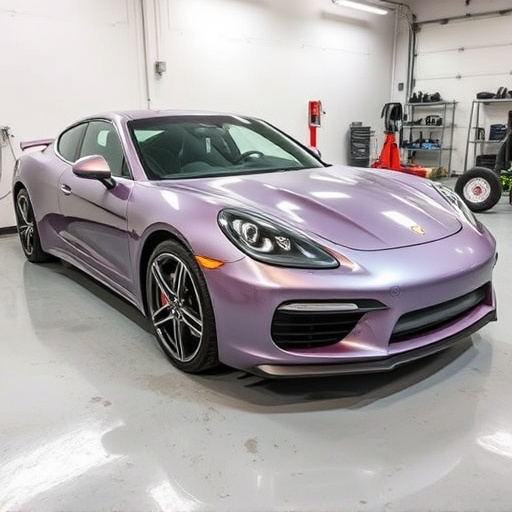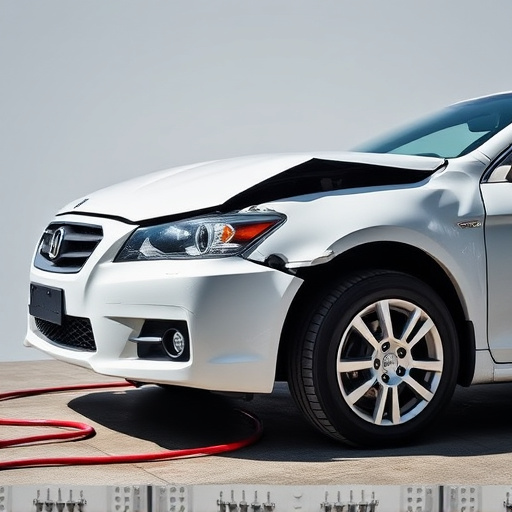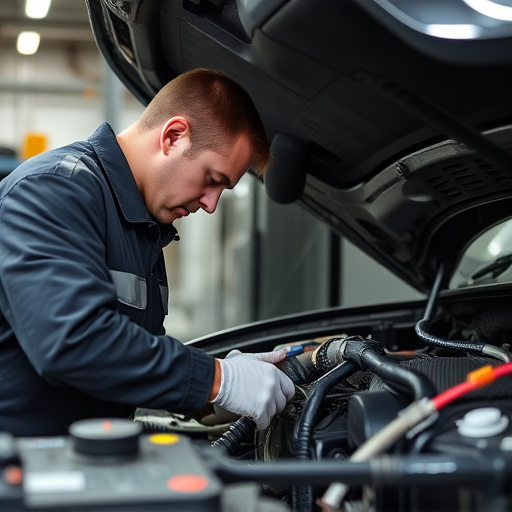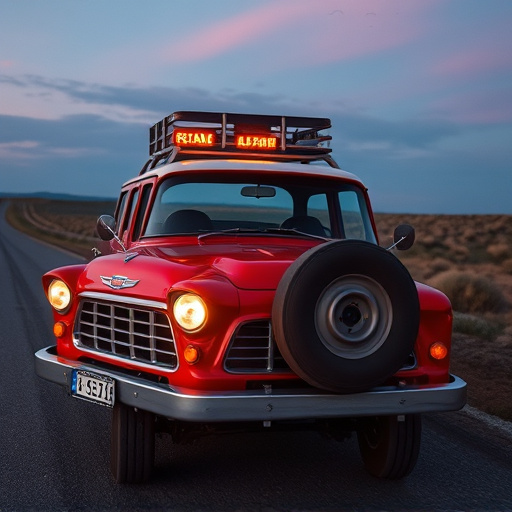Digital paint matching is transforming collision repair by using software to precisely match vehicle paint colors and textures, streamlining operations, reducing manual mixing time, and ensuring consistent accuracy. This technology enhances efficiency, improves repair quality, minimizes waste, and cuts project timelines, making it a valuable asset for modern auto body shops aiming to deliver high-quality services at lower costs. A step-by-step guide to implementing digital paint matching includes assessing current processes, selecting software, digitizing paint samples, training staff, and establishing quality control measures for seamless integration and competitive edge.
“Digital paint matching is transforming the way businesses approach color accuracy, offering significant time and cost savings. This innovative technology ensures precise color replication, eliminating the need for physical testing and manual adjustments. In an era driven by efficiency, understanding and implementing digital paint matching can revolutionize painting processes, enhance productivity, and optimize resource allocation.
Our article guides you through the fundamentals, explores its business advantages, and provides a practical step-by-step guide to adoption.”
- Understanding Digital Paint Matching: The Basics
- Time and Cost Savings: How It Benefits Businesses
- Implementing Digital Paint Matching: A Step-by-Step Guide
Understanding Digital Paint Matching: The Basics
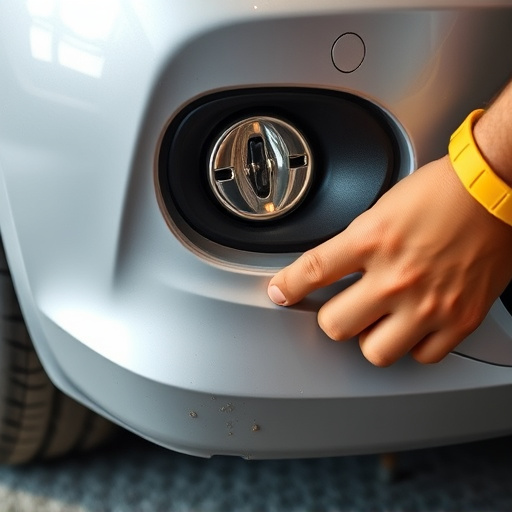
Digital paint matching is a revolutionary technology transforming traditional auto body work and collision repair processes. It involves using advanced software to precisely match the color and texture of vehicle paints, ensuring seamless repairs that blend effortlessly with the existing finish. This innovative approach eliminates the need for time-consuming manual mixing and testing, a process often prone to human error.
By employing digital paint matching systems, auto body shops can streamline their operations, reducing the time spent on paint preparation significantly. Moreover, this technology ensures consistent color accuracy across repairs, be it for auto glass repair or extensive collision repair work. It’s a game-changer that not only enhances efficiency but also delivers superior results, making it a valuable asset to any modern collision repair shop.
Time and Cost Savings: How It Benefits Businesses
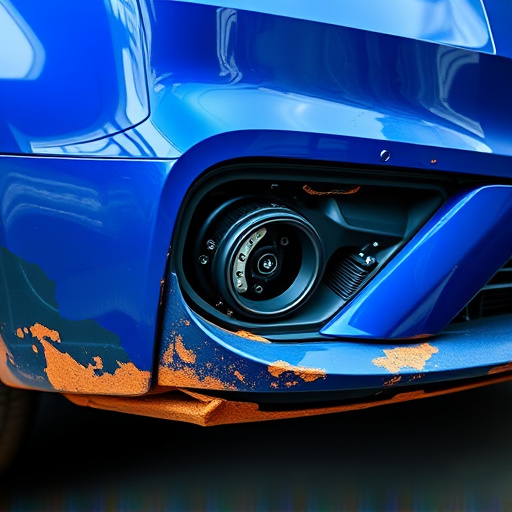
Digital paint matching is a game-changer for businesses offering auto body services and car body repair, bringing significant time and cost savings to the table. Traditional methods of color matching often involve manual mixing and testing, which can be both time-consuming and prone to human error. With digital technology, this process becomes efficient and precise. By utilizing specialized software, technicians can quickly access an extensive database of paint colors and shades, enabling them to match any required hue with incredible accuracy.
This innovation streamlines the bumper repair process, reducing the number of steps needed to achieve a perfect color match. It minimizes wastage by eliminating over-mixing or incorrect formulations, which are common issues in manual mixing. Moreover, digital paint matching reduces the need for multiple rounds of testing and re-application, cutting down on labor costs and project timelines. This technology is a valuable asset for businesses, ensuring they deliver high-quality repairs more efficiently and at a lower cost to their clients.
Implementing Digital Paint Matching: A Step-by-Step Guide
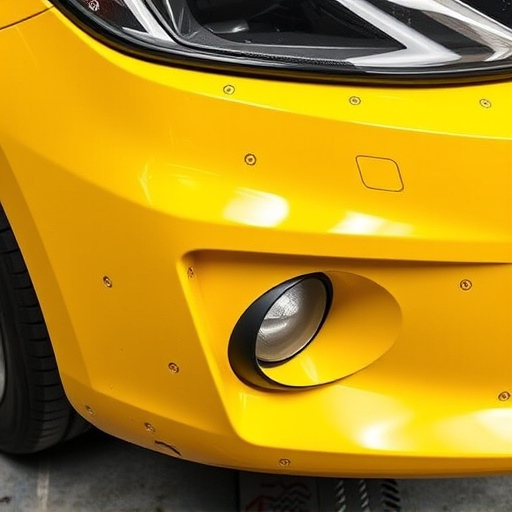
Implementing Digital Paint Matching: A Step-by-Step Guide
1. Assess Your Needs: Begin by evaluating your current paint mixing and matching process. Identify pain points, inefficiencies, and areas where digital paint matching can make a significant impact. Consider factors like the scope of your vehicle repair services or auto body work, frequency of paint jobs, and desired level of precision.
2. Choose the Right Digital Paint Matching Software: Select a software tailored to your needs, whether it’s for specialized car damage repair or general vehicle maintenance. Ensure the software offers robust features such as advanced color matching algorithms, real-time data synchronization, and seamless integration with existing workflows. This investment will pay off in the long run by streamlining your auto body work processes.
3. Digitalize Your Paint Samples: Create a comprehensive digital library of paint samples from various manufacturers. Scan or take high-resolution images of the paints, ensuring accurate color representation. Organize these samples within the software for easy access and comparison during repairs.
4. Train Your Team: Educate your staff on the new system’s functionality and benefits. Provide hands-on training to ensure everyone understands how to use the digital paint matching tool efficiently. This step is crucial in ensuring a smooth transition and maximizing the software’s potential in vehicle repair services.
5. Implement Quality Control Measures: Establish standard operating procedures (SOPs) for using the digital paint matching system. Include guidelines on color selection, mixing ratios, and final inspection checks. Regularly audit these processes to maintain consistency and achieve optimal results in every auto body work project.
Digital paint matching is a revolutionary technology that streamlines painting processes, offering significant time and cost savings for businesses. By leveraging advanced algorithms and databases, this method ensures precise color matching, reducing waste and labor expenses. Implementing digital paint matching involves a straightforward, step-by-step approach, making it accessible to various industries. Embracing this innovation can lead to more efficient operations, enhanced product quality, and better overall performance, solidifying its position as an indispensable tool in modern manufacturing and design practices.

